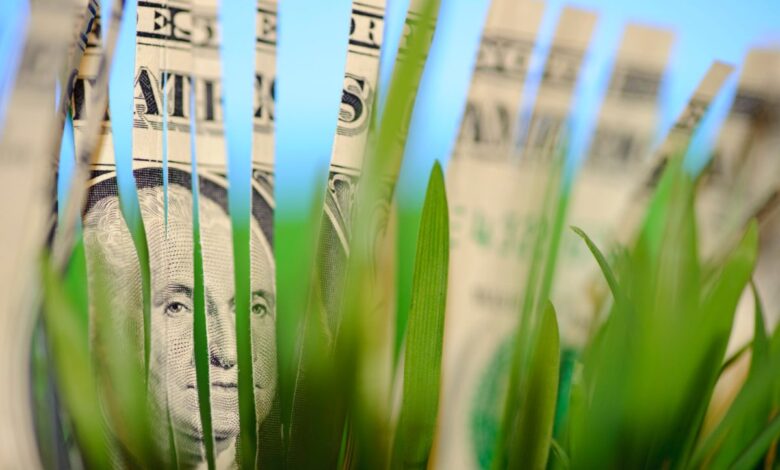Central Banks and the Green Economy: A Path to Sustainable Growth

Central banks are playing a critical role in addressing climate change by steering the financial sector toward sustainability. However, there is a significant disparity, particularly in developed countries such as the United States, between the creation of climate change strategies and their execution. This gap is apparent in the struggle to reach 2030 CO2 emission reduction targets, and points to the need for more practical measures[i].
The immediacy of the situation calls for a reinterpretation of financial principles. Central banks across the globe, historically focused on controlling inflation and fostering economic growth, have evolved to serve an essential role in guiding the market toward environmental sustainability. They are increasingly integrating climate risk factors into their economic evaluations.
Over the past four decades, various economic philosophies have shaped the financial landscape in developed nations, with ideologies ranging from the laissez-faire principles of Neoliberalism to the proactive governmental roles suggested by Keynesianism, as well as the contemporary Modern Monetary Theory (MMT). Despite its fresh perspective on government spending and debt, MMT doesn’t accentuate the contribution of central banks, such as the Federal Reserve, toward environmentally friendly investments. Economists have voiced concerns about MMT, particularly relating to public debt and climate finance[ii].
The United States, recognized as a significant contributor to global CO2 emissions, is being pressured to amplify its efforts to curb climate change. Traditional economic theories, such as neoclassicism, forecast substantial financial obstacles, including a potential rise in inflation stemming from the enormous investments required for climate change mitigation. On the other hand, MMT believes the move is more political, proposing government backing to facilitate the ecological shift and advocating for government subsidies to aid the green transition[iii].
The practicality of MMT is under debate, however, with concerns about continuing inflation risks and declining international demand for US Treasury bonds. A more appropriate approach for US policymakers is to follow the European Central Bank (ECB) model and green regulatory framework.

The ECB Model
The ECB is stepping up its game, aligning its financial strategy with the EU’s climate objectives. It is revamping its Corporate Sector Purchase Programme and collateral framework and merging practical climate action with market neutrality. The ECB’s strategy is fondly dubbed ‘Green Quantitative Easing,’ focusing on purchasing green assets to support environment-friendly projects and lower finance costs. It’s a strategic move, nudging the European economy toward sustainable growth and development[iv]. In addition, the ECB is tackling climate-related financial risks head-on by introducing new tools and processes.
The Fed’s Role in Tackling Climate Change
Recognizing climate change is a considerable financial hazard, the US Federal Reserve initially took a research-focused approach before moving toward policy initiatives. This shift is a departure from the norm for the Fed, traditionally seen as neutral but now emerging as an essential pillar in tackling climate change’s financial and economic consequences. The divided nature of American politics and the substantial clout of the fossil fuel industry[v] substantially restrict the potential for more audacious climate action initiatives.
As the US finance sector considers this paradigm shift, top-tier banks are shaping policies to boost green-oriented initiatives. These efforts are gaining momentum through innovative hybrid asset classes and new investment tools that marry traditional asset characteristics with a sharp focus on environmental sustainability. Their objective is twofold: achieving financial gains while advancing environmental goals, such as reducing carbon footprint and promoting renewable energy.
New asset classes — like those discussed in CFA Institute Research and Policy Center’s “Navigating Transition Finance” report — strive to consolidate funding avenues, giving birth to new financial instruments crucial to green economic tactics. Yet, this quest for innovation isn’t a lone journey. Central banks are teaming up with giant asset managers, including pension funds and sovereign wealth funds, making for a powerful alliance. Still, this cooperation underlines a significant challenge: there is a pressing need to direct a large share of these resources toward investments that align with climate preservation[vi].
The Role of GSIBs
In the face of escalating regulations, societal changes, and technological advancements, Global Systemically Important Banks (G-SIBs) are amplifying their emphasis on strategies related to climate change. These strategies include promoting green financing, minimizing investment in high-emission sectors, and improving climate risk management. As a reflection of public demand and emerging opportunities offered by green finance, G-SIBs have pledged almost $9 trillion for sustainable financing by 2030. This commitment marks a notable advance toward the projected $130 trillion required for a worldwide transition to a net-zero economy by the midpoint of this century[vii].
The Fed has a significant role in fostering a greener economy. It can encourage environmentally conscious investments. Its partnerships with the Environmental Protection Agency and Securities and Exchange Commission further empower its capabilities. Furthermore, its participation in global discussions on sustainability reinforces its mission to reshape our financial backdrop without compromising its cherished independence[viii].
Now more than ever, green economics is vital in macroprudential policy. Financial organizations reluctant to adapt to an economy aware of its carbon footprint risk severe instability[ix]. In contrast, those who respond to these changes promptly stand to profit from the emerging green opportunities. The challenge for the industry lies in reducing direct and transitional climate risks and catering to the growing group of investors and borrowers who deem environmental sustainability a priority.
The Fed’s Supervision Climate Committee (SCC) plays a significant role in fortifying financial organizations against the disruptions caused by climate change. The SCC is at the forefront of understanding and addressing the financial consequences of climate change. Their work includes evaluating risks, devising mitigating strategies, and ensuring that regulatory standards are adhered to for effective climate risk management.
In addition, the SCC extends its efforts to comprehend the economic implications of climate change through extensive research. It works tirelessly to increase stakeholders’ awareness and provides the crucial guidance and resources that financial institutions need. The SCC also holds sway over Congressional climate expenditure, thus shaping legislative and fiscal strategies concerning environmental policies[x].
In 2023, Fed Chairman Jerome Powell acknowledged the multifaceted financial implications of climate change. He emphasized, however, that the Fed would not nudge banks toward promoting environmentally friendly investment products. For a substantial shift in policy, legislative changes would be necessary, but the Fed is subtly moving toward sustainable investment by nudging financial bodies to strengthen their climate risk management. Powell hinted that a widening of the Fed’s scope into green finance could be in the cards, but it would necessitate approval from Congress[xi]. Given the global pressure and its esteemed position as a leader in the world’s central banking system, we’ll likely see the Fed slowly moving toward the same path as the European Central Bank (ECB).
Environmental, social, and governance (ESG) investments are growing in importance due to the escalating climate emergencies. Amongst the ESG array, green finance seems primed to surpass other ESG investments, backed by strengthening support from regulatory bodies and changing investment tendencies. The 10-year growth curve from 2012 to 2022 shows green finance manifested a hundredfold expansion[xii]. With additional guidance on climate risk from authorities like the Fed and heightened cognizance of climate calamities, green finance stands poised to significantly contribute to funding vital environmental initiatives in the future.
By joining international bodies like the Basel Committee, the Fed demonstrates its dedication to collective and transparent practices[xiii]. It is at the juncture of navigating its historical monetary roles alongside its concerns for potential financial instability due to climate change. Though directly influencing the market for green investment products exceeds its authority, its strategic insight is crucial in steering the economy toward a more sustainable future.
A Greener Form of Capitalism
The Fed and other leading central banks are progressively aligning with climate change policies. Their guidance, monetary policies, and dedication to innovation and cooperation are pivotal in melding financial stability with sustainability goals. As we journey toward a more sustainable future, the tactical moves of these institutions will be instrumental in channeling funds toward meeting the CO2 reduction targets set for 2050. This marks an evolution toward a greener form of capitalism in the global capital markets.
Citations:
[i] United Nations Environment Program, Feb 17th, 2022, “Emissions Gap Report 2022” https://www.unep.org/resources/emissions-gap-report-2022
[ii] National Affairs, Fall of 2023, No 57, “The Weakness of Modern Monetary Theory” https://www.nationalaffairs.com/publications/detail/the-weakness-of-modern-monetary-theory
[iii] Global Research and Consulting Group Insights, Nov 7th, 2023, “A Magic Money Tree for the Climate Crisis” https://insights.grcglobalgroup.com/claire_costa-brown-edu/
[iv] Institute of International European Affairs, May 2020, “Green Central Banking: Options for ECB on Climate Change” https://www.iiea.com/images/uploads/resources/Green-Central-Banking-Options-1.pdf
[v] Brookings Institute- Hutchin Center Working Paper #88, August 2023, “Why the Fed and the ECB parted ways on Climate Change” https://www.brookings.edu/wp-content/uploads/2023/08/WP88-DiLeo-et-al.pdf
[vi] OECD, 2021, “Financial Markets and Climate Transition-Opportunities, Challenges and Policy Implications” https://www.oecd.org/finance/Financial-Markets-and-Climate-Transition-Opportunities-Challenges-and-Policy-Implications.pdf
[vii] Board of Governors of the Federal Reserve System-International Finance Discussion Papers, Number 1368, January 2023, “What are Large Global Banks Doing About Climate Change?”, https://www.federalreserve.gov/econres/ifdp/files/ifdp1368.pdf
[viii] Board of Governors of the Federal Reserve System, March 19th, 2023, “Climate Change and Financial Stability https://www.federalreserve.gov/econres/notes/feds-notes/climate-change-and-financial-stability-20210319.html
[ix] Bank of International Settlements, January 2020, “The Green Swan-Central banking and financial stability in the age of climate change”, https://www.bis.org/publ/othp31.pdf
[x] Board of Governors of the Federal Reserve System-Fed Notes, March 19th, 2021, “Climate Change and Financial Stability” https://www.federalreserve.gov/econres/notes/feds-notes/climate-change-and-financial-stability-20210319.html
[xi] Green Central Banking, Oct 26th, 2023, “US Regulators release climate-related financial risk guidelines for banks” https://greencentralbanking.com/2023/10/26/us-regulators-climate-related-financial-risk-guidelines-fdic-occ-fed/
[xii] Reuters, March 31st, 2022, “Global green finance rises over 100-fold in the past decade -study” https://www.reuters.com/business/sustainable-business/global-markets-greenfinance-graphics-2022-03-31/
[xiii] Board of Governors of the Federal Reserve System, Feb 18th , 2021, Speech by Lael Brainard, “The Role of Financial Institutions in Tackling the Challenges of Climate Change” https://www.federalreserve.gov/newsevents/speech/brainard20210218a.htm





